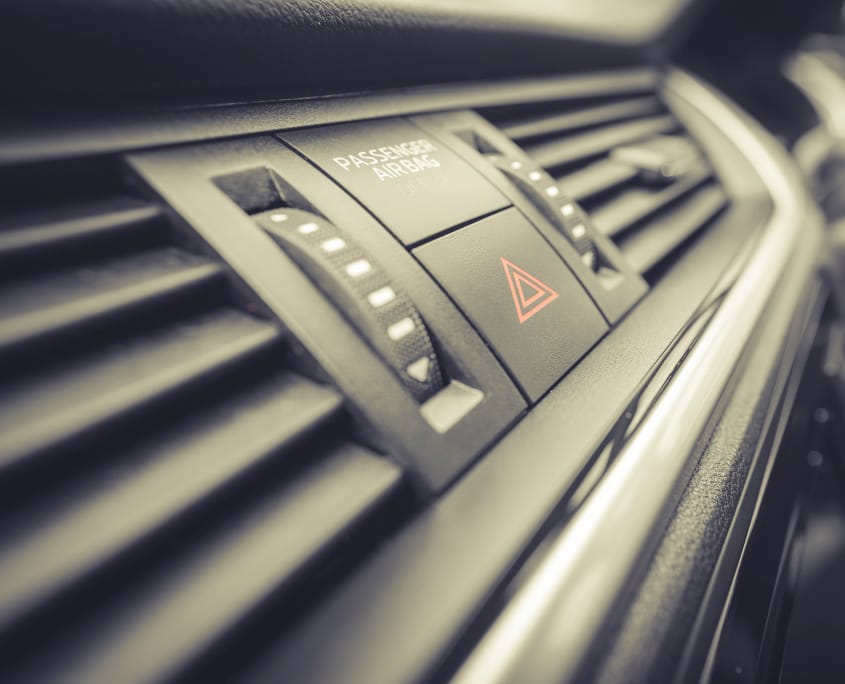Does car aircon use more petrol?

Understand the connection between fuel efficiency and your vehicle’s air conditioning system
When cruising down the road on a hot summer day, there’s nothing like the relief of turning on the air conditioning and feeling that cool breeze. But have you ever wondered if running your car’s air conditioning system affects fuel efficiency? It’s a common question among drivers, and the answer isn’t as straightforward as you might think.
At Natrad, our air conditioning specialists have outlined how your car’s air conditioning system impacts fuel consumption. Read on to find the right balance between keeping cool and optimising fuel-efficiency.
How car air conditioning works
Before discussing fuel efficiency, it’s essential to first understand how a vehicle’s air conditioning system operates:
Turning on the AC activates the compressor, which pressurises and circulates refrigerant throughout the air conditioning system. This refrigerant absorbs heat inside the passenger cabin, and dissipates it to the outside air through the condenser. A blower fan pushes the now cooled air into the cabin, keeping you cool while you drive.
The impact on fuel efficiency
The compressor, responsible for circulating refrigerant, is driven by the engine via a belt. Therefore, the engine must work harder to power both the vehicle and the air conditioning system simultaneously which leads to additional fuel consumption.
The age and condition of your vehicle may play a significant role as well. Older cars tend to have less efficient AC systems, leading to higher fuel usage. Similarly, if your car’s engine is not well-maintained or tuned improperly, then it may struggle to power the air conditioning system efficiently which further increases fuel consumption. Take these factors into account as we discuss further below.
Windows vs AC
A common debate among drivers is whether rolling down the windows or using the AC is more fuel-efficient. While rolling down the windows may seem like a fuel-saving option, it also increases the effect of drag on your vehicle as outside air exerts a slowing force onto the car.
When experiencing drag, your engine has to work harder to reach and maintain speed, resulting in extra petrol usage. At low speeds, the burden drag has on your car is negligible. At high speeds however, its impact is exponentially more significant.
If you want to be as fuel efficient as possible, it’s good practice to have your windows wound down in heavy traffic, and to wind them back up when driving at highway speeds.
That said, it’s important to recognise that this debate is not always black and white. The most fuel-efficient option depends on multiple factors, not only including vehicle speed, but also, altitude, vehicle shape/aerodynamics, air conditioning technology and your personal temperature preference.
Altitude
The further you are from sea level, the less dense air gets. This means at high altitudes, less air flows through the condenser and your compressor has to work harder to deliver the same level of cool air flow. This makes your air conditioner less fuel-efficient.
When air is less dense, drag has less of an effect on your vehicle. Therefore, at high altitudes, the slowing effect of drag from having your windows wound down is less significant, making it the more fuel-efficient option.
This also works in reverse. At low altitudes, your air conditioner is working closer as intended and there is more air density to exert more drag on your vehicle. In low altitudes, you’ll want to keep your windows up.
Vehicle shape/aerodynamics and engine size
Certain vehicle shapes are more aerodynamic than others. Trucks, for example, create a lot of drag because their large square shape hits more air as it moves along compared to smaller, more angular cars. The increase of drag on a truck from winding down the windows is more or less negligible compared to the amount of drag a truck is already experiencing. If your vehicle is smaller and more aerodynamic however, then introducing drag by winding down the windows has a more significant effect on fuel-efficiency.
Therefore winding down your windows tends to be the more fuel efficient option for larger vehicles, whereas using AC tends to be more efficient for smaller vehicles.
Air Conditioning Technology and Vehicle Age
It’s also important to take into account that modern advancements in automotive engineering have led to more fuel-efficient air conditioning systems and improved vehicle aerodynamics, which further blurs the lines between the windows vs AC argument. For example, some modern cars have climate-control air-conditioning which only operates the compressor when needed, to maintain the selected interior temperature, ensuring your AC isn’t running longer than needed − reducing fuel consumption.
Older or poorly maintained vehicles may have inefficient air conditioning systems. In this case, a wound down window may be the more fuel-efficient alternative until you can get your system fixed.
Personal Preference
Some people like it warm. Others like it cold. Maybe you’re wearing a jumper. Does leaving the aircon on or winding down the window help you breathe? Whatever the case, your personal aircon/window preferences will affect what the most efficient option looks like for you.
So AC or Windows?
With so many factors, it is difficult to confidently state if it would be more fuel efficient to use your AC or to wind down your windows as the answer is likely to vary depending on each specific scenario.
In general however, if you’re driving an older vehicle at slow speeds at a high altitude, then rolling down the windows would be more fuel-efficient than using your AC. Likewise, if you’re driving a new vehicle at high speeds at a low altitude, then it’s likely your AC would be the more fuel efficient option.
Ultimately, the best approach is to consider the specific circumstances of each journey and make an informed decision based on your vehicle, speed and personal comfort preferences.
Some people might suggest not winding down their window or using the aircon, to avoid any additional fuel consumption at all (even when it’s hot out). This is not something Natrad suggests. Driving while uncomfortable is a significant distraction that can compromise your safety while driving. At the end of the day, being comfortable and alert while driving comes before fuel efficiency.

Tips for improving fuel economy with your air conditioning
While it’s inevitable that using your car’s air conditioner will increase fuel consumption to some extent, there are steps you can take to mitigate its impact and use less fuel:
- Use economy mode: Many modern cars come equipped with an economy mode for its air conditioning, which reduces power consumption and, consequently, fuel usage.
- Park in the shade: Parking your car in the shade whenever possible can help reduce the initial heat buildup inside the cabin. This reduces the need to use the AC altogether as the car is already cool.
- Service your AC regularly: Regular maintenance, including cleaning or replacing auto air conditioning parts, ensures that your system operates efficiently, minimising its impact on fuel consumption.
At Natrad, our AC technicians offer expert quality air conditioning checks, maintenance and repair. If your air conditioner isn’t performing as well as it used to just nip into Natrad and we can make sure your air conditioner is running to a cool, comfortable and fuel-efficient standard in no-time.







